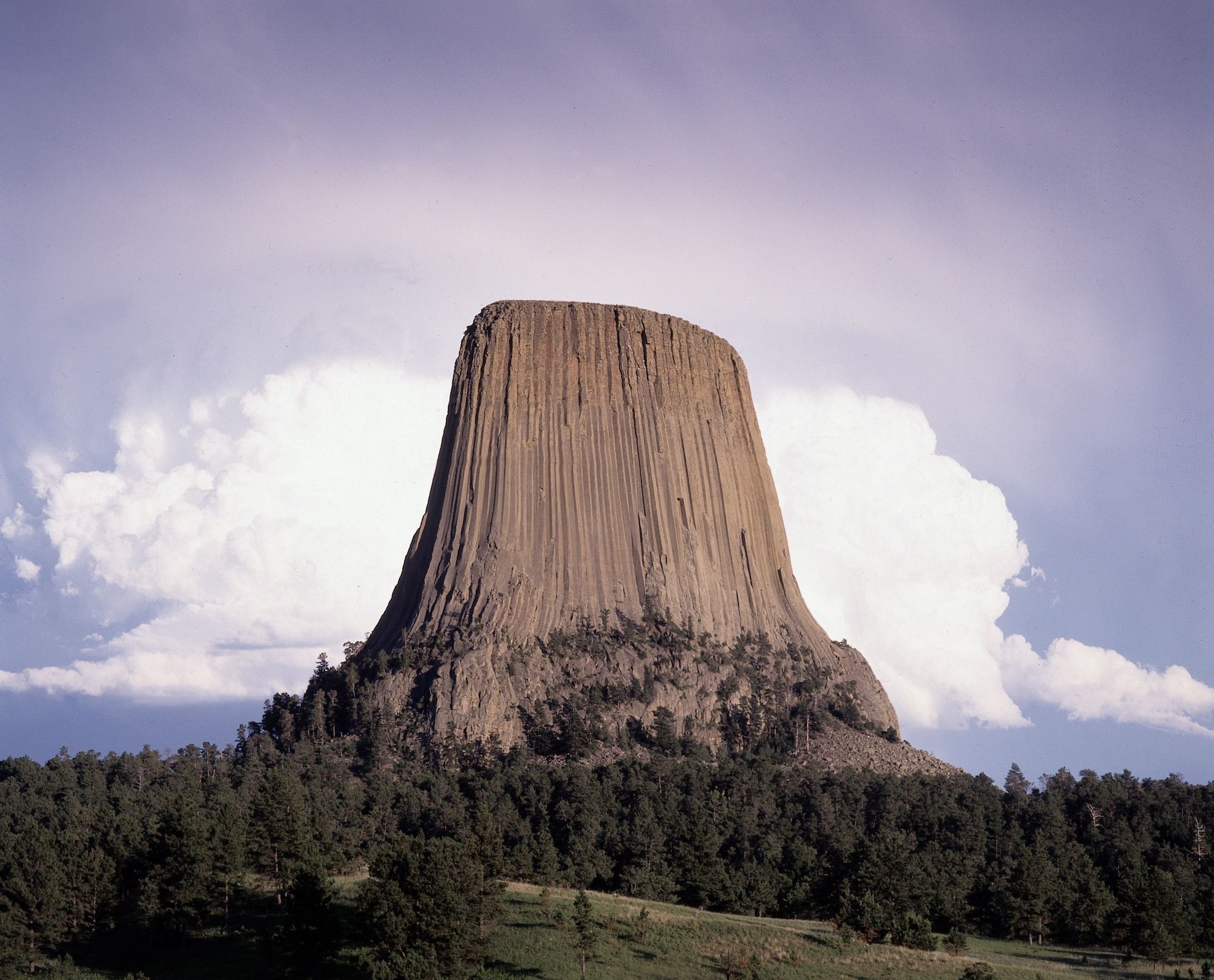How Can You Tell if a Rock Is Intrusive or Extrusive
Igneous Rocks
Igneous Rocks
Igneous rocks are ane of three main types of rocks (forth with sedimentary and metamorphic), and they include both intrusive and extrusive rocks.
Subjects
Earth Science, Geology
Image
Devils Tower Rock
Devil's Tower National Monument in Wyoming is an instance of an igneous rock.
Photo by Koumlhn/ullstein bild courtesy of Getty Images

Igneous rocks class when magma (molten stone) cools and crystallizes, either at volcanoes on the surface of the Earth or while the melted rock is still inside the crust. All magma develops hole-and-corner, in the lower crust or upper drapery, because of the intense heat there. Igneous rocks can have many different compositions, depending on the magma they absurd from. They can likewise look different based on their cooling conditions. For case, two rocks from identical magma can become either rhyolite or granite, depending on whether they cool quickly or slowly. The two main categories of igneous rocks are extrusive and intrusive. Extrusive rocks are formed on the surface of the World from lava, which is magma that has emerged from undercover. Intrusive rocks are formed from magma that cools and solidifies within the crust of the planet. When lava comes out of a volcano and solidifies into extrusive igneous stone, also called volcanic, the rock cools very rapidly. Crystals inside solid volcanic rocks are small because they do not have much time to form until the rock cools all the way, which stops the crystal growth. These fine-grained rocks are known equally aphanitic—from a Greek word meaning "invisible." They are given this proper noun because the crystals that class inside them are so pocket-size that they tin be seen only with a microscope. If lava cools nearly instantly, the rocks that form are glassy with no individual crystals, similar obsidian. At that place are many other kinds of extrusive igneous rocks. For example, Pele'southward hair is long, extremely thin strands of volcanic glass, while pahoehoe is smooth lava that forms shiny, rounded piles. Intrusive rocks, also called plutonic rocks, cool slowly without always reaching the surface. They have large crystals that are normally visible without a microscope. This surface is known as a phaneritic texture. Perhaps the best-known phaneritic rock is granite. Ane extreme type of phaneritic rock is called pegmatite, found frequently in the U.Due south. state of Maine. Pegmatite can have a huge variety of crystal shapes and sizes, including some larger than a human mitt.

Devil's Belfry National Monument in Wyoming is an instance of an igneous rock.
Photograph by Koumlhn/ullstein bild courtesy of Getty Images
aphanitic
Adjective
Rock texture with crystals that are invisible without magnification.
basalt
Substantive
type of dark volcanic stone.
granite
Noun
type of hard, igneous rock.
lava
Noun
molten rock, or magma, that erupts from volcanoes or fissures in the Earth'due south surface.
Noun
molten, or partially melted, rock beneath the World's surface.
Noun
centre layer of the World, made of more often than not solid rock.
pahoehoe
Noun
polish lava that forms shiny, rounded piles
pegmatite
Noun
fibroid-grained igneous rock with variable crystal size
Pele's hair
Noun
long, extremely thin volcanic glass
phaneritic
Describing word
stone texture with large crystals that are visible to the naked center
plutonic
Adjective
term used to describe intrusive igneous stone
Source: https://www.nationalgeographic.org/encyclopedia/igneous-rocks/
0 Response to "How Can You Tell if a Rock Is Intrusive or Extrusive"
Post a Comment